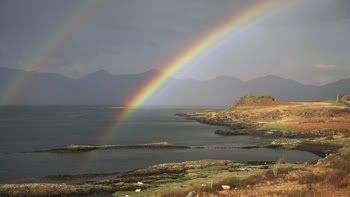
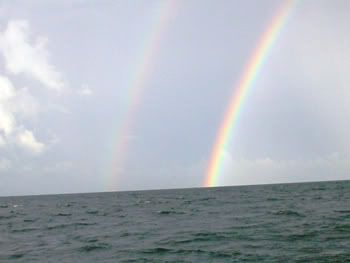
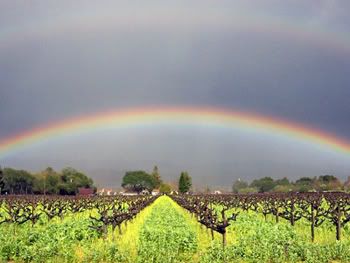
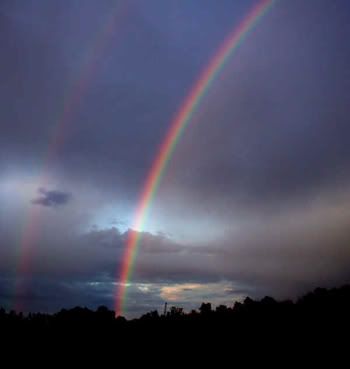

Today, we had an intense thunderstorm for about three minutes. Towards the end, it was still pouring down rain, but otherwise, the sky was clear and the ground and the trees were lit in bright sunshine as the rain fell. It was awesome, and there was one of the brightest rainbows I have ever seen immediately afterwards.
Rainbows can be observed whenever there are water drops in the air and sunlight shining from behind a person at a low altitude angle (on the ground). The most spectacular rainbow displays happen when half of the sky is still dark with draining clouds and the observer is at a spot with clear sky in the direction of the Sun. The result is a luminous rainbow that contrasts with the darkened background.
The rainbow effect is also commonly seen near waterfalls or fountains. Rainbow fringes can sometimes be seen at the edges of backlit clouds and as vertical bands in distant rain or virga. The effect can also be artificially created by dispersing water droplets into the air during a sunny day. Rarely, a moonbow, lunar rainbow or night-time rainbow, can be seen on strongly moonlit nights. As human visual perception for color is poor in low light, moonbows are often perceived to be white.
You can create your own rainbow by facing 180 degrees from the sun and spraying mist from a garden hose in front of you in a circular motion, outlining a 360 degree "rainbow".
Occasionally, a second, dimmer, and thicker secondary rainbow is seen outside the primary bow. Secondary rainbows are caused by a double reflection of sunlight inside the raindrops, and appear at an angle of 50°–53°. As a result of the second reflection, the colors of a secondary rainbow are inverted compared to the primary bow, with blue on the outside and red on the inside. The dark area of unlit sky lying between the primary and secondary bows is called Alexander's band, after Alexander of Aphrodisias who first described it.
A third, or tertiary, rainbow can be seen on rare occasions, and a few observers have reported seeing quadruple rainbows in which a dim outermost arc had a rippling and pulsating appearance. These rainbows would appear on the same side of the sky as the Sun, making them hard to spot. One type of tertiary rainbow carries with it the appearance of a secondary rainbow immediately outside the primary bow. The closely spaced outer bow has been observed to form dynamically at the same time that the outermost (tertiary) rainbow disappears. During this change, the two remaining rainbows have been observed to merge into a band of white light with a blue inner and red outer band. This particular form of doubled rainbow is not like the classic double rainbow due to both spacing of the two bows and that the two bows share identical normal color positioning before merging. With both bows, the inner color is blue and the outer color is red.
Thanks for reading.
Technorati Tags: rainbows, double rainbows, tertiary rainbows, thunderstorms, rain, rainfall
Generated By Technorati Tag Generator













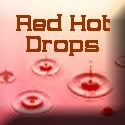

6 comments:
What a fabulous site to behold, I'm besides myself just looking at the photos, I can't imagine what it's like to be there, up close and personal.
Thank you for sharing these beautiful photos.
Absolutely incredible photos!!!
Happy WW!! (belated) (I found your site today via Entrecard)
Oh wow! Beautiful. I love rainbows.. something so magical about them :)
I'm on the run to go see "What Happened In Las Vegas". I'll come back later to read the post. Just want to tell you those are spectacular rainbow photos. Have a great day, Matt.
Those are some of the most beautiful pics I have seen in a while! Great Job!
We were 15 min. late for the movie, so we decided to go tomorrow. I came back to read your post. Good info. Yes, I have seen rainbows near waterfalls, just like you described it.
Post a Comment